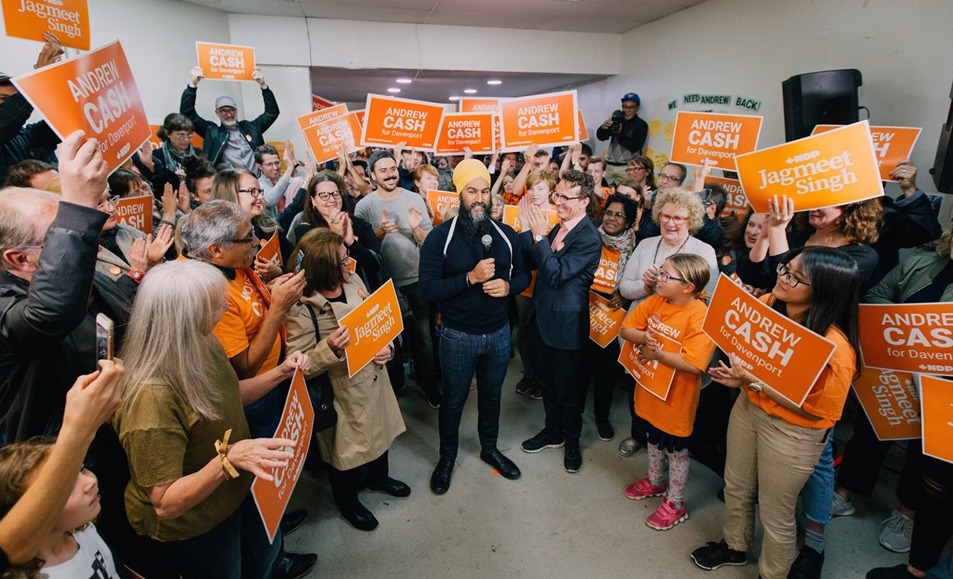A Canadian society divided by gender, two main languages, region, social class, nation, and ancestral origin relies on political parties to take its differences and broker them into a coherent approach.
In election 2019, Canada is characterized by divisions that none of the parties are able to overcome to the satisfaction of enough voters to produce a majority government — which only Liberals or Conservatives have managed in the past.
Across Canada in this campaign, Liberals, Conservatives, and New Democrats have to contend with the Green party as well as each other. The Bloc Québécois is a renewed force in Quebec.
With only two to three percentage points of support, breakaway Conservative Maxime Bernier and his People’s Party of Canada (PPC) threaten to prevent Andrew Scheer and his Conservatives from winning some close races.
In a minority parliament, Canada has accumulated 13 years less a day experience since 1972; governments are obliged to reach across the aisle for support. Cooperation, compromise, and even joint undertakings become daily practice. While the adversarial nature of party politics remains, it is overshadowed by the government need to hold onto power through satisfying a minority partner.
The 1963-1968 minority Parliament era of the Lester Pearson Liberals and the Tommy Douglas NDP is the outstanding example of Canadian party cooperation. Medicare, the auto pact, the Canada Pension Plan, a national flag, funding for post-secondary education, student loans, and the Canadian social safety net (later shredded by Chrétien in the 1995 Reform-inspired budget) were some of its achievements.
The standard way for a Liberal or Conservative majority government to hold on to power is to draw its policy inspiration from the opposition, depriving them of reasons for people to support them.
The Jean Chrétien Liberal party took its drastic budget cuts of 1995 straight from the Preston Manning Reform party election promises. Following the close results of the second Quebec referendum, Chrétien took the Manning Plan B — the get tough on Quebec sovereignty supporters approach — and turned it into his Clarity Act legislation.
Confronted by the NDP as official opposition, the Harper majority of 2011 held tight to strict party ideology and worked to fire up the party base.
In the 2015 election, while the NDP had come out for the balanced-budget approach advocated by the Harper Conservatives from the government benches, the Liberals announced a traditional NDP policy of spending on government infrastructure.
Pledging to go into deficit to invest in the future and counting on Canadians being tired of decades of government austerity, the Liberals went from third place and 36 seats to government and 184 seats — a jaw-dropping gain of 148 MPs.
In 2019, breaking the cycle of Liberal-Conservative government — an objective of Jagmeet Singh and the New Democrats — starts with the NDP winning enough seats to play a key role in a minority Parliament.
In the last days before October 21, the Liberals are talking about a “strategic” vote — meaning a vote for them — in order not to elect a Conservative and to keep the NDP, Bloc, and Greens from having voting sway in a minority Parliament.
This may be a Liberal strategy, but for a voter mulling it over, such a vote is a tactic not a strategy, adopted to defeat a party you reject. It means setting aside your first choice in the hopes that your second choice will turn out to be an efficient vote: one that elects a candidate other than the one you fear the most.
What puts parties other than the Conservatives and PPC on the same page is the conviction that Canada must step up on climate.
The Greens have it right. A voting parliamentary coalition — with a wartime-style multi-party cabinet — is politically necessary to tackle the transition to a green economy.
The Conservatives have pledged to scrap infrastructure projects already underway when what is needed is to break with the small-government era that has government (all three levels) share of spending on goods and services as equal to only one-fifth of GDP — no more than in 1970.
A serious plan for the environment would have government spending on education, health care, housing, transportation and electrical power generation accounting for one-third of the production of goods and services, as in Sweden, which as a result is on track for zero carbon emissions by 2045.
The minority parties — the NDP, Bloc and Greens — must take the lead to make it happen in Canada.
Duncan Cameron is president emeritus of rabble.ca and writes a weekly column on politics and current affairs.
Image: Jagmeet Singh/Facebook




